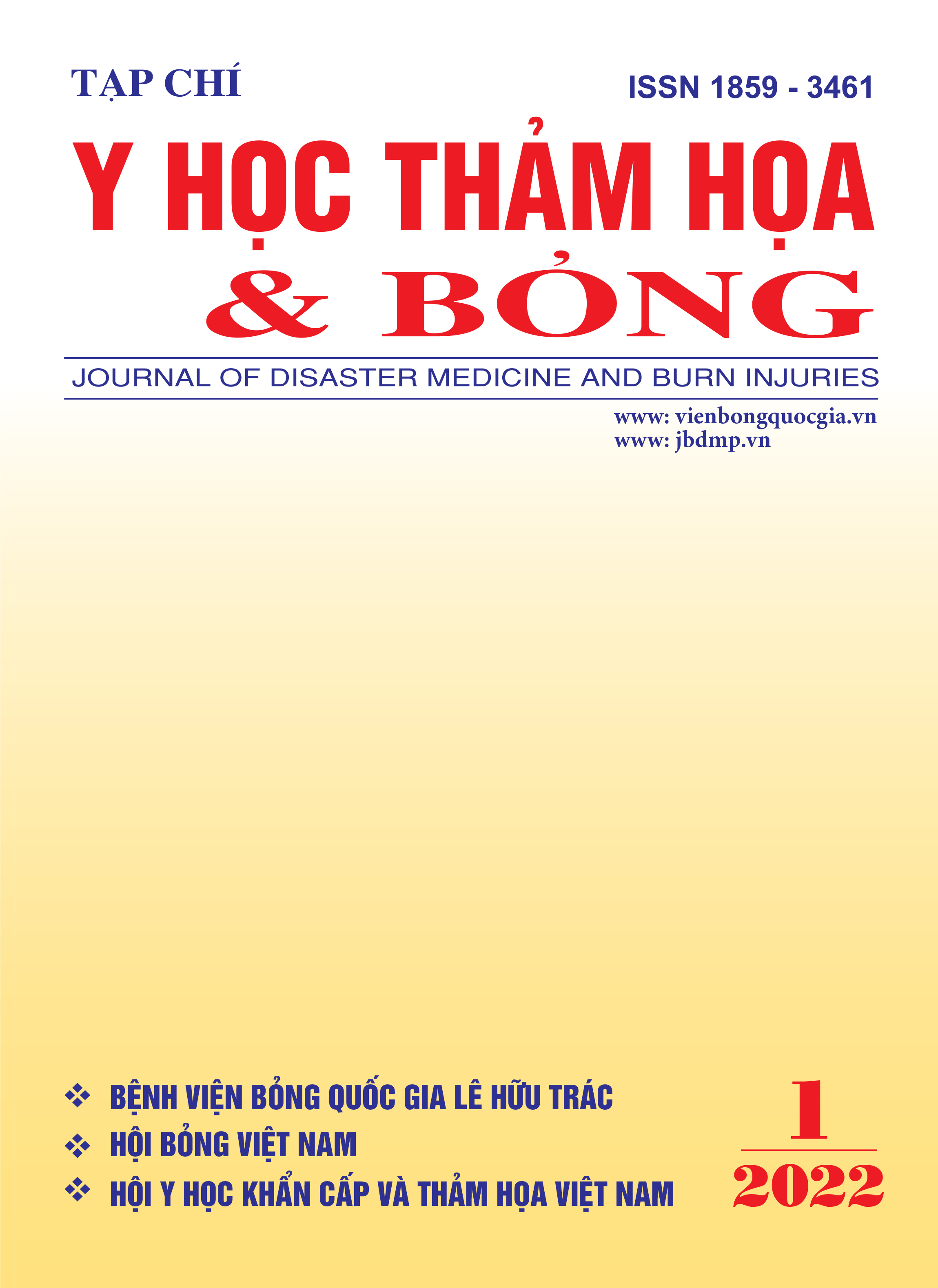Study change in peripheral blood platelet count of patients with moderate, severe and very severe burns
Main Article Content
Abstract
Objective: To find out the change in peripheral blood platelet count of patients with moderate, severe and very severe burns in the first 10 days after burns.
Subjects and methods: The cross-sectional, prospective study was made on 123 patients with moderate, severe and very severe burns cases treated at the Intensive Care Unit at the National Burn Hospital from April 2019 to September 2020.
Results: The average platelet count right after the burn was 240.48 ± 80.73 G/l. On the 3rd day after the burn 121.71 ± 73.09G/l, the number of patients whose platelets decreased below 100G/l was 39.84% of the patients. The platelet counts on the seventh and the tenth days after the burn were 207.33 ± 119.42G/l and 285.85 ± 162.43G/l, respectively. There was not much difference in the platelet count among the groups of patients with moderate, severe and very severe burns (p > 0.05) at the study time point. The proportion of patients with platelet counts below 100 G/l of very severe patients at the third and the fifth days after the burn was 39.84% and 34.96%, respectively.
Conclusion: There was no change in platelet count on the first-day after-burn. The lowest platelet count was on the third day after the burn both in the platelet count and in the number of patients with the platelet count below 100G/l. The platelet counts gradually recovered on the seventh and the tenth day after the burn. There was not much difference in the platelet counts among the groups of patients with moderate, severe and very severe burns at different time points (p > 0.05).
Article Details
Keywords
Platelets, Burns
References
2. Nguyễn Đạt Anh (2012). Các xét nghiệm thường quy áp dụng trong thực hành lâm sàng. NXB Y học.
3. Y Takashima (1997). Blood platelets in severely injured burned patients Burns. Nov-Dec 1997;23(7-8):591-5.
4. Sarda DK, Dagwade AM, Lohiya S, et al (2005). Evaluation of platelet count as a prognostic indicator in early detection of post-burn septicemia. Bombay Hosp J. 2005;47(3):3-6.
5. EI-Sonbaty M.A., EI-0tiefy M.A. (1996), “Haematological chang in severely burned patients”, Annals of Burns and Fire Disasters - vol. IX - n. 4 - December 1996.
6. Marina Pavić, Lara Milevoj (2007). Platelet count monitoring in burn patients. Biochemia Medica 2007;17(2):212-9
7. Surya Prakash, Chhaya Rani Shevra, Dwijendra Nath (2020). Evaluation of burn sepsis with reference to platelet count as a prognostic indicator https://www.cjhr.org/article.asp?issn=23483334;year=2020;volume=7;issue=3;spage=193;epage=196;aulast=Prakash
8. Levi M, van der Poll T. (2017), Coagulation and sepsis (2017). Thromb Res. 2017;149:38-44.


